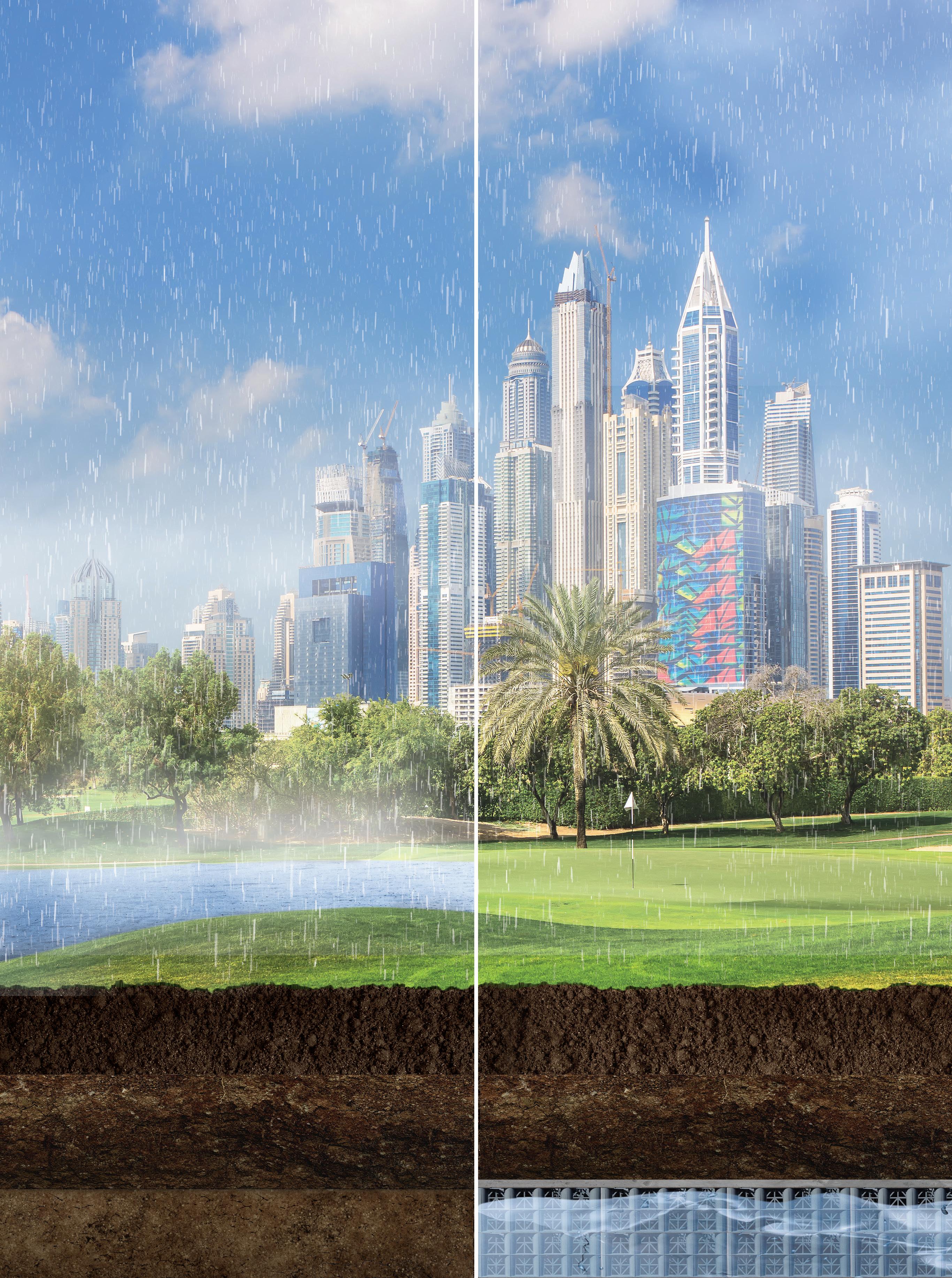SUSTAINABLE URBAN DRAINAGE SOLUTIONS



Join the movement for sustainable drainage systems, shaping a resilient and environmentally conscious future for our cities
Sustainable Drainage Systems (SuDS) are revolutionising urban planning, offering a practical solution to manage flood and pollution risks while championing environmental enhancement and place-making.
A collaborative effort involving engineers, landscape architects, urban designers, local authorities, water companies, and developers is essential to maximise the benefits of SuDS on every site.
Early engagement is pivotal for cost-effective SuDS solutions, emphasizing the importance of integrating SuDS into site planning from the outset. This approach not only streamlines the process but also addresses ongoing maintenance responsibilities, ensuring the long-term sustainability of SuDS schemes.
As Sustainable Drainage Systems (SuDS) transition into a new era of development, marked by significant shifts in governmental policies, heightened environmental awareness, evolving cost dynamics, and changing societal demands, the industry finds itself on the cusp of transformative change. This pivotal moment is characterized by a surge in innovative SuDS initiatives, symbolizing a profound commitment to sustainable urban development and environmental stewardship. The current landscape reflects a growing recognition of the importance of SuDS in mitigating flood risks, enhancing water quality, and fostering environ-

mental resilience within urban areas. As a result, stakeholders across various sectors, including government bodies, urban planners, engineers, developers, and water management authorities, are increasingly embracing SuDS as integral components of urban planning and construction practices. However, amidst this surge in SuDS projects, there exists a notable gap in expertise and skills within the industry. The rapid proliferation of SuDS initiatives has outpaced the available pool of experts, underscoring the critical need for comprehensive knowledge sharing and capacity-building initiatives. Addressing this skills gap is imperative to ensure the successful implementation and long-term sustainability of SuDS projects across diverse urban landscapes.
In response to these challenges and opportunities, industry stakeholders must prioritize collaborative efforts and knowledge exchange initiatives. By fostering a culture of openness, innovation, and shared learning, the industry can harness the collective expertise of its members to
The current landscape reflects a growing recognition of the importance of SuDS in mitigating flood risks, enhancing water quality, and fostering environmental resilience within urban areas.”
address complex urban water management challenges effectively. Moreover, as SuDS continue to gain prominence as integral components of urban infrastructure, stakeholders must remain committed to ongoing research, development, and refinement of SuDS methodologies and practices. By embracing a forward-thinking approach to SuDS implementation, the industry can unlock new opportunities for environmental enhancement, community resilience, and sustainable urban development.
REVOLUTIONISING URBAN WATER MANAGEMENT
SuDS represent a fundamental shift in urban water management, offering innovative solutions to manage rainfall and surface water runoff in developed areas.
Unlike traditional drainage systems, which prioritize rapid removal of water, SuDS aim to replicate natural drainage processes, allowing developed sites to function similarly to greenfield areas.
At the heart of SuDS philosophy is the concept of mimicking natural drainage patterns. By capturing, storing, and slowly releasing rainfall, SuDS systems reduce the risk of flooding, prevent pollution, and enhance water quality. These systems utilise a combination of natural features and engineered components to effectively manage stormwater runoff, promoting infiltration, evaporation, and transpiration processes. Key components of SuDS include permeable pavements, green roofs, swales, ponds, and wetlands, each designed to capture and treat stormwater close to its





Points to Remember
❖ SuDS aim to replicate natural drainage processes, allowing developed sites to function similarly to greenfield areas.
❖ SuDS systems reduce the risk of flooding.
❖ SuDs prevent pollution, and enhance water quality.
❖ SuDS also enhance biodiversity, create green spaces, and improve the aesthetic appeal of urban environments.
❖ Regular inspections, vegetation management, and sediment removal are necessary to ensure the continued effectiveness of SuDS infrastructure.
source. By incorporating vegetation and natural materials into urban landscapes, SuDS not only improve water management but also enhance biodiversity, create green spaces, and improve the aesthetic appeal of urban environments.
However, the successful implementation of SuDS requires more than just technical expertise. Effective stakeholder collaboration and community engagement are essential for overcoming challenges and capitalizing on the opportunities presented by SuDS. Engaging with local authorities, developers, residents, and environmental organizations early in the planning process can help identify suitable SuDS strategies, address concerns, and ensure long-term success.
Moreover, ongoing maintenance and monitoring are critical to the sustained performance of SuDS systems. Regular inspections, vegetation management, and sediment removal are necessary to ensure the continued effectiveness of SuDS infrastructure and prevent potential issues such as blockages or sediment buildup.
PIONEERING WASTE WATER MANAGEMENT IN THE UAE
In the arid landscape of the UAE, where water conservation is paramount, the implementation of Sustainable Drainage Systems (SuDS) emerges as a groundbreaking solution. SuDS represent a paradigm shift in waste water management, aiming to mimic natural drainage processes to control surface water runoff, mitigate flooding, and enhance water quality, all while promoting sustainability.
The UAE, known for its innovative approach to tackling environmental challenges, has embraced SuDS as a cornerstone of its waste water management strategy.
 Anam Khan anam@khaleejtimes.com
Anam Khan anam@khaleejtimes.com